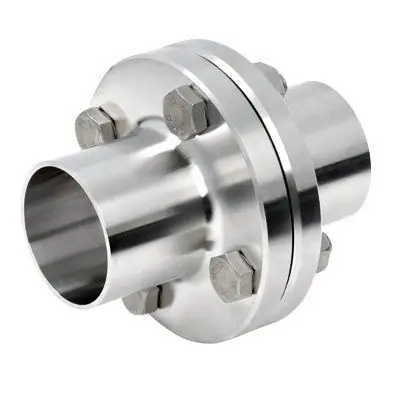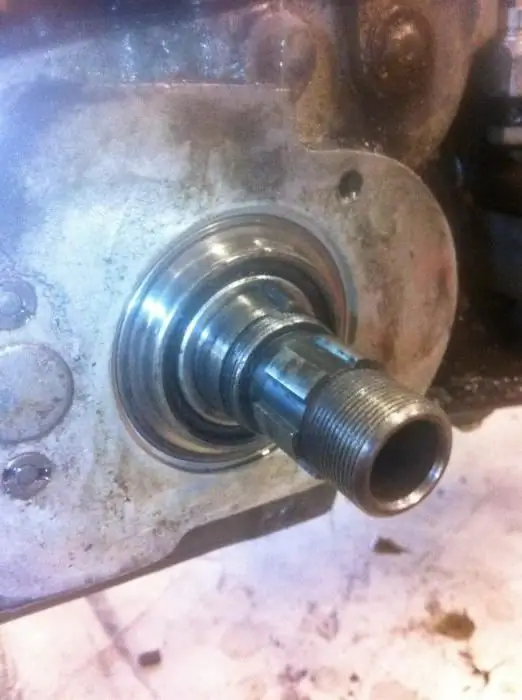2026 Author: Howard Calhoun | [email protected]. Last modified: 2025-01-24 13:10:31
Threaded connections depend on the outer and inner surface of the location. They are internal, external, conical and cylindrical. They differ in section and profile of the part: round, rectangular, persistent, trapezoidal. Appointment can be running or fastening.
The fastener has a triangular profile and is divided into two groups: inch and metric.

An inch threaded connection is measured in inches (hence the name), the pitch is 25.4 mm. It is characterized by the number of helix threads per inch of the cut part.
Inch threads are used to connect pipes (called "pipe threads"). Also used for cutting on spare parts of various equipment. In machines that are produced in our time, inch threads are not used. Standards are designed for metric, so the design is under this standard.
Threaded connections with thrust threads are used for heavy loads. Trapezoidal fasteners serve as a fastener when transmitting movement (lead screws) and forces, but do not produce rigid fastening of parts. Forfittings use round threads, in machines it is used extremely rarely.
With a triangular profile, threaded connections are the most reliable, even with

same diameter. Thrust is less durable. Trapezoidal threads will be even less reliable. The weakest is rectangular. Due to smooth rounding, the round one has a high dynamic strength.
Threaded connections are divided into groups: screw, combined, bolted and stud.
The simplest connections consist of a nut and a screw.
To avoid self-unscrewing in the connections, locking parts are used that soften vibration and shock load, reduce friction.
There are many ways to stop self-unscrewing in the reference books.
Car threads are made with carbon metal bolts. In fasteners that require increased reliability and strength, alloyed chromium steel is used. At the moment of tightening the threaded connections, a dynamic key is used (it normalizes the load torques). Such keys are used in mechanisms where the connection force is strictly defined in the technical documentation.

Threaded connections are first clamped, then slightly loosened and tightened again. This controls the correct clamping force.
The calculation of threaded connections is made in order to determine the stress that occurs in the connection. Also needcalculate the margin of safety for the bolts used.
The calculation is performed by elements:
- without nut and with nut;
- with eccentric and concentric loads;
- with pin fastening;
- the contact zone is determined by the geometry of the thread;
- if there are many cylindrical shaft sections;
- with many plates.
The calculations use the same statistical loads.
Threaded connections are good because they can always be disassembled without damaging the parts themselves.
Recommended:
Business connections: defining the concept, reputation, connections, establishing relationships

Success in business is impossible without establishing relationships with other people. Therefore, every business person tries to expand his circle of contacts, because any business or friendly relationship can become a necessary resource in business development. Let's talk about what connections and relationships are in the business world, how to develop connections, and why they are needed
Detachable connections: photo, drawing, examples, installation. Types of detachable and permanent connections

In mechanical engineering and instrumentation, not only the parts that are used in production, but also their connections play a very important role. It would seem that everything should be extremely simple, but in fact, if you delve into this topic, you will find that there are a huge number of different compounds, each of which has its own advantages and disadvantages
What are flange connections? Types of flange connections. Flanged connections in industry

Flanged connections are often used in industry. They must ensure the tightness and strength of the assembled structures. The role of a high-quality connection is important, because a weak bond can lead to large losses and threaten the danger to the operating personnel
Connections: purpose, types of connections. Examples, advantages, disadvantages of types of compounds

Machines and machine tools, equipment and household appliances - all these mechanisms have many details in their design. Their high-quality connection is a guarantee of reliability and safety during work. What types of connections are there? Let's take a closer look at their characteristics, advantages and disadvantages
Reserves of banks and their formation. Required bank reserves and their norm

Bank reserves ensure the availability of funds for the uninterrupted fulfillment of payment obligations regarding the return of deposits to depositors and settlements with other financial institutions. In other words, they act as a guarantee

